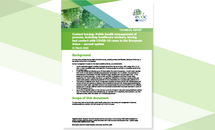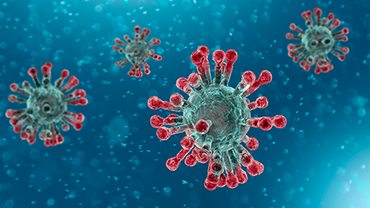Contact tracing in the European Union: public health management of persons, including healthcare workers, who have had contact with COVID-19 cases – fourth update
For an overview of contact tracing related topics, including contact tracing for Omicron, please see the ECDC contact tracing landing page under 'Read more' below.
This document aims to help public health authorities in European Union and European Economic Area (EU/EEA) countries in their tracing and management of persons, including healthcare workers (HCWs), who have had contact with COVID-19 cases. Contact tracing should be implemented in combination with non-pharmaceutical measures as appropriate.
This document outlines the key steps for contact tracing in the context of the COVID-19 response, including contact identification, advice, and follow-up. Contact management is based on the latest available evidence on COVID-19, as outlined below.
Executive Summary
Key messages
- Contact tracing is an essential public health measure to fight the ongoing COVID-19 pandemic, in conjunction with active case finding and testing, and in synergy with other measures such as physical distancing. The purpose of identifying and managing the contacts of a COVID-19 case is to support early diagnosis and to interrupt onward transmission through the rapid identification and management of secondary cases that may arise after transmission from the primary case. This is achieved through:
- prompt identification of the contacts of a COVID-19 case;
- providing contacts with information on self-quarantine, proper hand hygiene and respiratory etiquette, and advice around what to do if they develop symptoms;
- testing all high-risk exposure contacts, whether vaccinated or not, as soon as possible after they have been identified to allow for further contact tracing;
- testing all unvaccinated low-risk exposure contacts; and
- testing all contacts that become symptomatic.
- Each country should adapt their response to the local epidemiological situation and available resources. The rigorous and timely application of contact tracing measures in areas where there are a limited number of cases can play a key role in limiting further spread of the outbreak. However, if resources allow, contact tracing should also be undertaken in geographical locations with more widespread transmission.
What is new in this document?
- Considerations relating to new developments since the last update, including:
- vaccination against SARS-CoV-2 has been rolled out across EU/EEA countries,
- several new variants of concern (VOCs) have emerged, and
- evidence on transmissibility of the B.1.617.2 (Delta) variant and on vaccine effectiveness is now available.
- Differentiation between the management of vaccinated contacts versus unvaccinated contacts.
- Revised recommendations for contact tracing in the school setting.
Download







